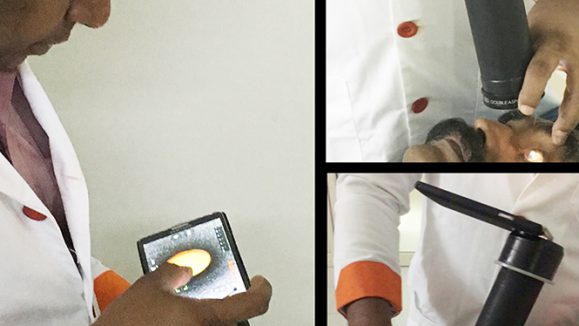Have you found yourself wondering just what Big Data can do for the future of ophthalmology? Been scratching your head in deep thought, considering the potentially profound changes enormous numbers will bring to the table?
If you have been thinking about this, you’re paying attention to a singularly important development in not just ophthalmology, but in the medical field in general. If Big Data hasn’t been on your mind, well, lucky you — you’ve found this article, which will talk about Big Data in ophthalmology.
Do note that Big Data doesn’t have to be capitalized, but it will be here because it represents an enormous change in datasets that goes far beyond traditional analytic approaches.
Let’s do a shallow dive into the IRIS Registry — since a deep dive would involve more numbers than many would be comfortable with, and the kiddy pool gives us plenty of room to play anyway. Let’s start with just talking about what we mean by “Big Data,” anyway.
First Stop: Big Data Basics
What makes Big Data different from just regular ol’ data? Dr. Emily Chew, director of the division of epidemiology and clinical applications at the National Eye Institute, described it at Asia-Pacific Academy of Ophthalmology Conference (APAO 2021). Big data has a few characteristics that set it apart. As she explained, Big Data is characterized by:
- Volume: the sheer quantity of data available
- Variety: featuring both unstructured and structured data
- Velocity: data is frequently generated and may even be real-time
- Variability: data varies in availability and even reliability among data elements
So, if we look at the four V’s presented above, we can draw two conclusions: There’s just more data available now than ever before, and we’ll need significant and powerful tools to help parse it. Big Data deals with datasets that are truly massive and more complex than traditional sets — and they can be a goldmine if properly managed.
The IRIS Registry: The Biggest Single-Specialty Database in the World

The Intelligent Research in Sight (IRIS) Registry is huge — currently the largest medical specialty database in the world, and is an initiative of the American Academy of Ophthalmology (AAO). Creating the database in itself is quite a feat, but let’s let the numbers do some talking.
As of July, 2021, the IRIS Registry features 17,967 physicians from 4,189 practices, the vast majority of which have been contracted for electronic health record (EHR) integration. Currently, 397.54 million patient visits have been logged, representing 69.20 million data points.
As Dr. David W. Parke II, CEO of the AAO put it, “The IRIS Registry will represent a seminal change in how the medical specialty of ophthalmology will improve performance and outcomes, while shortening the timeline for the dissemination of important clinical knowledge, research and results of drug and device surveillance.”
Members of the AAO can participate in the IRIS Registry for free as a member benefit. Just for the record, we’re not being paid by them to write this or to promote it — it’s just really cool. If they’d like to pay us to promote it, hey, we’re open-minded.
Using the Registry has all sorts of perks — like using it to improve your own practice’s, uh … practices, contributing to overall ophthalmic science progress and much, much more. If you want a more detailed list of just how it can benefit you, check here.
In just a few short years, the Registry has expanded to be a veritable data behemoth, and has the backing of some of the finest minds in ophthalmology. That’s something to be proud of.
Just how one goes about parsing the data will lead us into a discussion on AI tools, which we’ll come back to in the future.



